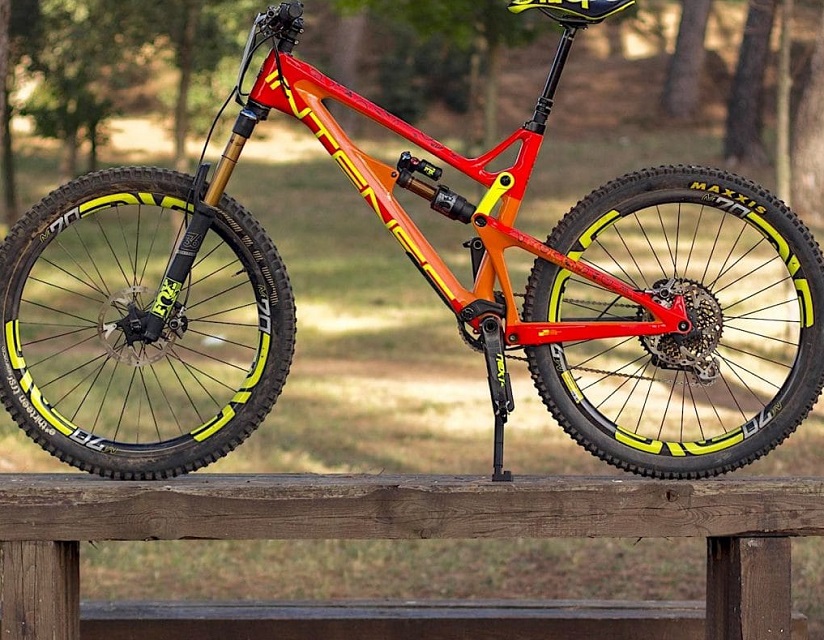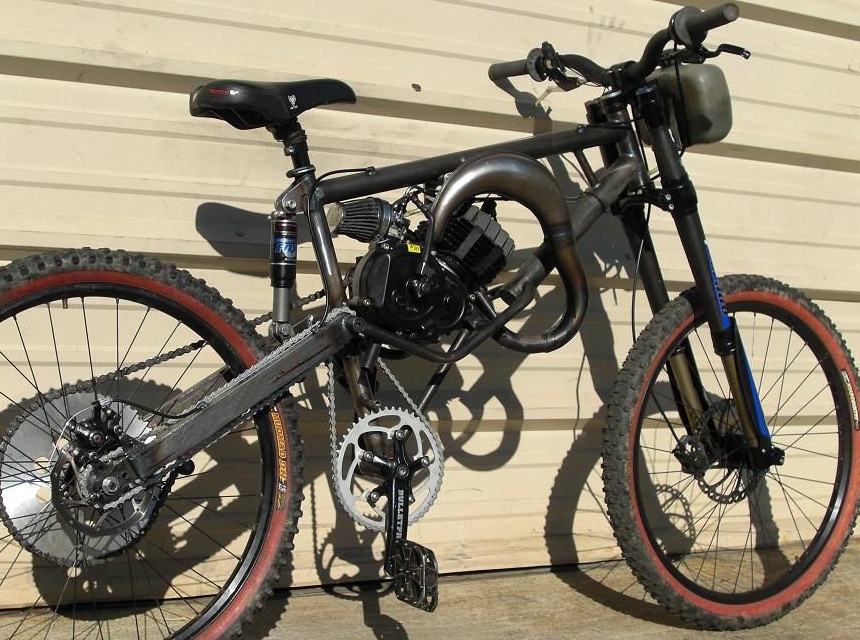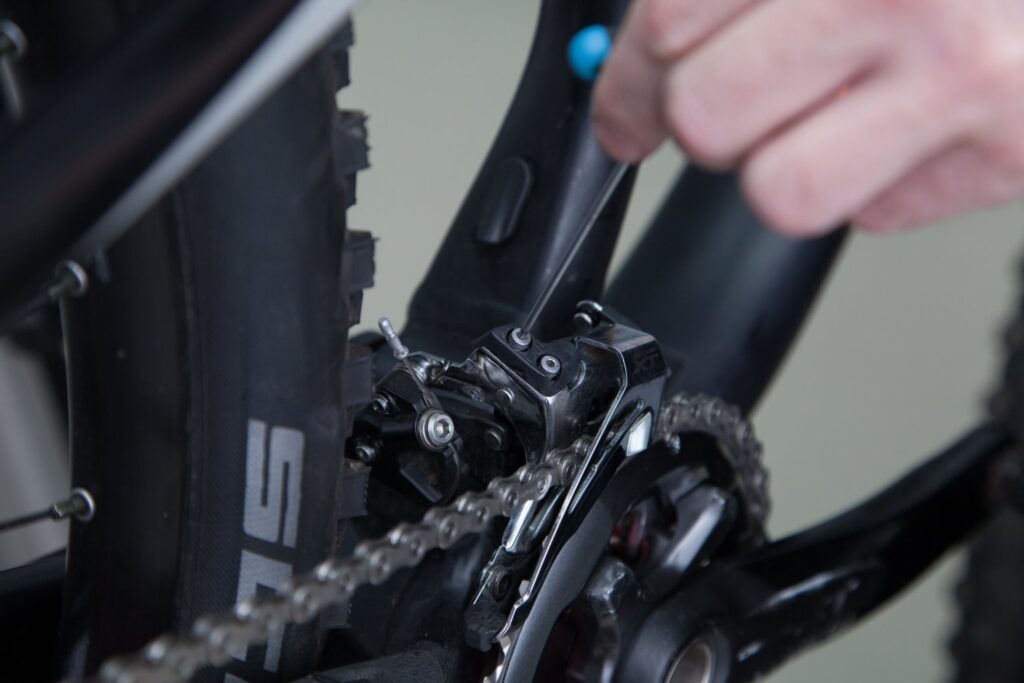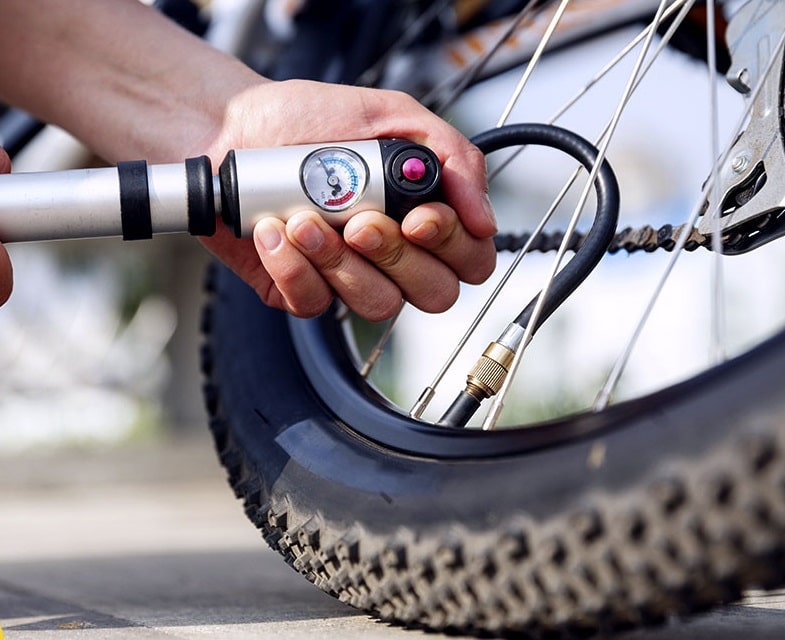- Trails
-
Bikes
-
Gear
-
Tips & Tricks
-
About us


While there are three types of bike tire valves, namely the Woods, Schrader, and the Presta, the Presta is the most common and increasingly so. It’ll likely even phase out the other two variations, and as such, even if you don’t have one on your bicycle, you should still learn how to inflate a Presta valve.
According to a study by Velonews Trusted Source Study: 103.7 million Americans ride bikes | VeloNews.com A new study indicates that bicycling participation among Americans is substantially greater than initially thought www.velonews.com , more than 103 million Americans ride bikes. Notably, a significant portion of this demographic doesn’t actually own bicycles. However, even if you don’t, but you make it a point to ride a bike occasionally, you can’t afford not to know how to pump a bike tire with a Presta valve. This skill might save you at a gas station or even when you’re biking through the woods or back roads with your pump.
We already mentioned that there are three types of valves featured on bike tires. However, if you’re filling a Presta valve, you need to know how it differs from the other two. After all, the mechanisms for inflation differ from valve to valve.
The valve type you’re more likely to be familiar with is the Schrader valve. This variation is fairly wide and short. It also looks like a protruding piece of pipe on the inside of the bicycle’s tire. Most of this structure may be covered by rubber that extends from the tire. The interior of this tube consists of metal construction.
The top of the Schrader valve is a threaded metal component. Also, it features a solitary structure similar to a button in the middle.
This button helps prevent air from going in or out of the tire when at its default position. However, by pressing this button, you open the airway in the valve.
Consequently, many compatible pumps compress this button when placed on the valve, which allows the user to add pressure. According to Engineering Trusted Source Schrader valve | Engineering | Fandom The Schrader Valve is a valve stem invented by August Schrader and is used on all automobile tires and lower pressure bicycle tires. It is a poppet valve assisted by a spring. Schrader valves are also used on the fuel rail of some direct fuel injection engines and on some automotive air… engineering.fandom.com , the Schrader valve is the brainchild of August Schrader hence the name and is present in all automobile tires. As such, if you own a car, you’ve definitely come across this type of valve severally.
Of course, a Schrader valve will also make your work easier when putting air into your bike tires at any gas station.
The Presta valve, on the other hand, has a slimmer and seemingly longer build. Their long metal construction is often threaded on the outside. Also, the top of this structure incorporates a screw-like stalk component in the middle of the valve. This component comes with a removable nut wrapped around the threads at the top.
The process for how to fill a Presta valve is easy if you have a Presta pump. You unscrew the nut in the top-middle part of the valve, so it’s higher up on the central stalk. You then depress the central stalk and then attach your pump.
Typically, the pump should be able to push the stalk down to open the airway. However, sometimes you notice the pump isn’t doing this well enough to allow it to put the air in a Presta valve. Pushing it with your finger beforehand loosens the component, so it moves more freely.
Also, many of these Presta valves come with a plastic dust cap that screws onto the outer side of the valve’s construction.
Worth mentioning is that carelessness when attaching a push-fit hand pump can damage the valve and cause more problems, so be careful. Also, most Presta bike pumps lock into place when you do this.
You can then pump the tire full before removing the pump and re-attaching the nut. Notably, it’s vital that you always re-tighten the nut when you’re done if you don’t want problems. Also, remember to replace the dust cap as well.
Woods look a bit stockier, but they’re threaded on the outside just like Presta alternatives. There’s no structure in the middle of the valve like the other two. Also, it accepts a Presta pump without needing any modifications beforehand. You just push it onto the structure like you would when airing and pumping up a Presta valve.
Woods are also the rarest of the three.
Now to learn how to blow up a Presta valve with an adapter. This will be an essential part of bike maintenance, just like cleaning your bike or tightening the chain. We mentioned the adapter because if you already own a regular air pump, it’s the best way to inflate a Presta valve without having to buy a Presta pump which is a lot more expensive.
Users recommend the Bike Bits Presta Valve Adapter because it’s durably constructed, and it’s pretty easy to install on your Presta valve. Furthermore, you can leave it attached to the valve, so it’s convenient.
Once you have the adapter, it’s a straightforward process. Remove the dust cap. Follow up by loosening the nut at the top of the central stalk of the Presta valve. You can check if it’ll work by pressing the top of the stalk.
After that, use a Schrader to Presta valve adapter. It screws onto the Presta valve like a dust cap. The air pump then fits easily onto this adapter, and you can then use it to inflate the tire. You can also air up and inflate a Presta valve with an air compressor, which is much faster that blowing manually. As you can see, the how-to for inflating a Presta valve with a Schrader pump is pretty straightforward.
After that, you can remove the adapter and re-tighten the nut before replacing the dust cap. However, as shown above, some of these adapters can be left in place for convenience.
How to inflate a Presta valve without an adapter is slightly more complicated, but it is still doable. However, you’ll need to sacrifice your dust cap to do it.
For this process, take off the dust cap and cut off the tip, so it’s open on two sides. Obviously, this will require a knife or a similar tool. You want as wide a hole as possible. However, you may also need the cap to be fairly long, depending on the size of your pump components.
Consequently, you don’t want to risk the cap being too short for your pump set-up. You should then unscrew the nut on the central stalk and press it down just like you would when using a Presta pump.
Follow up by screwing the modified cap onto the outside of the Presta valve backwards. This means the top hole that you just cut will go onto the valve first.
If the hole at the top is too thin for the valve, you can widen it with a screwdriver, a knife, the tip of your scissors or other make-shift tools. Ensure it screws onto the valve, so it’s firmly attached. The final set-up should look a lot like the top of a Schrader valve. After that, you can connect your Schrader/regular air pump, which will inflate the tire just fine.
You finish up by unscrewing your modified and then screwing the nut back to its original position. You can even complete this set-up at the gas station you stopped at while riding the bike. It’s simple and easy to do, although you should definitely invest in an adapter or a bunch of them that you carry with you whenever you ride.
The ideal pressure will often vary depending on the bike. For instance, the recommended pressure for a road bike stands between 90 and 120 psi. For mountain bikes, the ideal pressure is between 25 and 40 psi. There may be some other variations as well.
Notably, most bike tire manufacturers include this information on the side of the tire. As such, assuming it’s not too worn out or the tire is not too dirty, you can use the data provided as a reference.
Appropriately inflated tires are safer and make it easier to ride, so you want to be sure you’re in the proper range. Investing in a pressure gauge can help give you precise measurements on PSI. According to reviewers, the TireTek Tire Pressure Gauge for mountain bikes is well-calibrated, easy-to-use, and even fitted with a glow-in-the-dark dial for night use, so it should work quite well.
If the pressure is right, you can set off on your bike trip. If not, you can correct the situation before you step out.
This concludes our guide on how to inflate a Presta valve, whether at home or on the road. It’s advisable to get an adapter and leave it attached for convenience. However, there’s also an easy work-around for when you don’t have one on you. It’s also advisable to carry a compatible pump whenever you take longer bike trips, especially on back roads.




